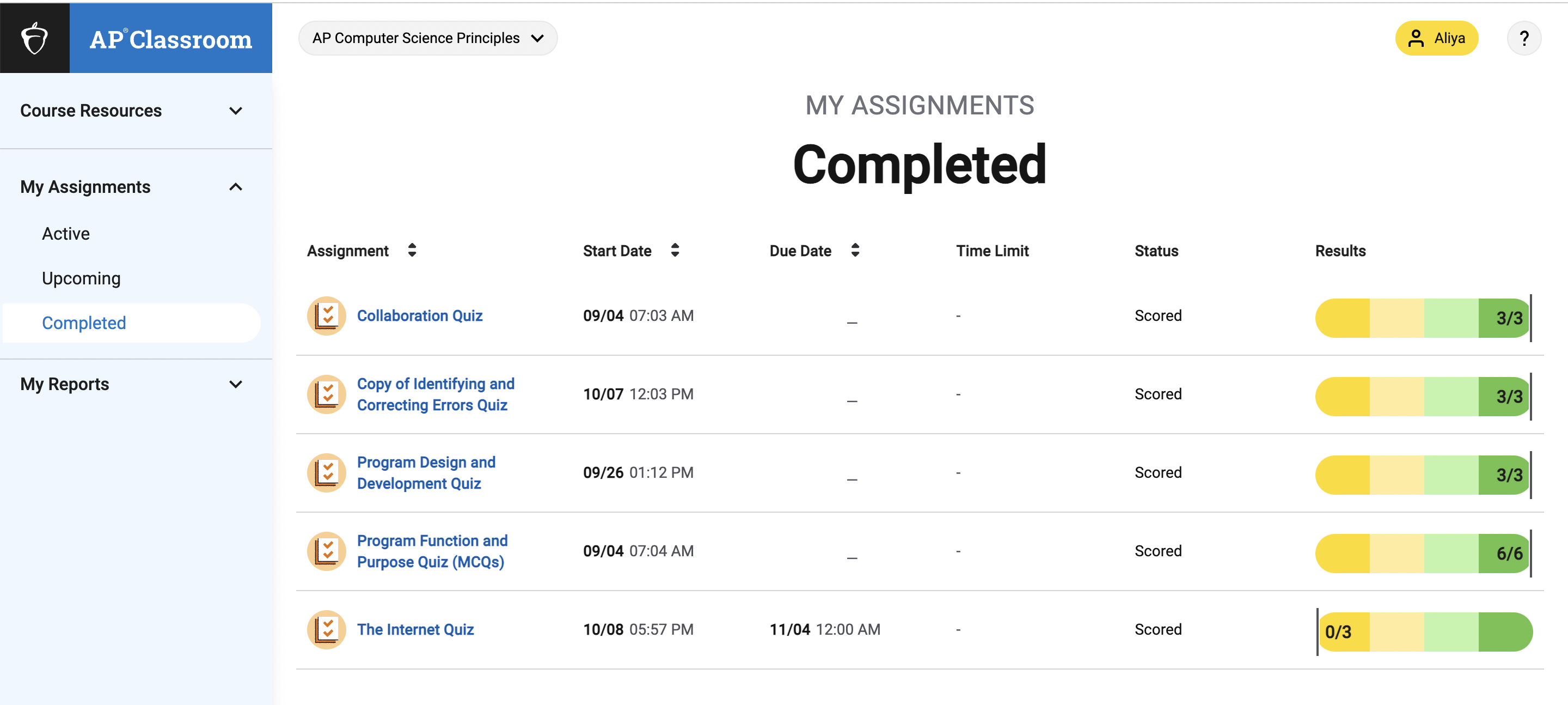4.1 College Board Video Notes
Notes for Big Idea 4
College Board MCQ:
 Watching videos is very helpful. I accidentally took the Internet Quiz without watching any videos or looking at outside sources and didn’t get the questions.
Watching videos is very helpful. I accidentally took the Internet Quiz without watching any videos or looking at outside sources and didn’t get the questions.
4.1 Daily Video 1
Essential Knowledge:
- A computing device is a physical artifact that can run a program. Some examples include computers, tablets, servers, routers, and smart sensors.
- A computing system is a group of computing devices and programs working together for a common purpose.
- A computer network is a group of interconnected computing devices capable of sending or receiving data.
- A computer network is a type of computing system.
- A path between two computing devices on a computer network (a sender and a receiver) is a sequence of directly connected computing devices that begins at the sender and ends at the receiver.
- Routing is the process of finding a path from sender to receiver.
- The bandwidth of a computer network is the maximum amount of data that can be sent in a fixed amount of time.
- Bandwidth is usually measured in bits per second.
4.1 Daily Video 2
Essential Knowledge:
- The Internet is a computer network consisting of interconnected networks that use standardized, open (nonproprietary) communication protocols.
- Access to the Internet depends on the ability to connect a computing device to an Internet connected device.
- A protocol is an agreed-upon set of rules that specify the behavior of a system.
- The protocols used in the Internet are open, which allows users to easily connect additional computing devices to the Internet.
- Routing on the Internet is usually dynamic; it is not specified in advance.
- The scalability of a system is the capacity for the system to change in size and scale to meet new demands.
- The Internet was designed to be scalable.
- Information is passed through the Internet as a data stream.
- Data streams contain chunks of data, which are encapsulated in packets.
- Packets contain a chunk of data and metadata used for routing the packet between the origin and the destination on the Internet, as well as for data reassembly.
- Packets may arrive at the destination in order, out of order, or not at all.
- IP, TCP, and UDP are common protocols used on the Internet
- The World Wide Web is a system of linked pages, programs, and files.
- HTTP is a protocol used by the World Wide Web.
- The World Wide Web uses the Internet.